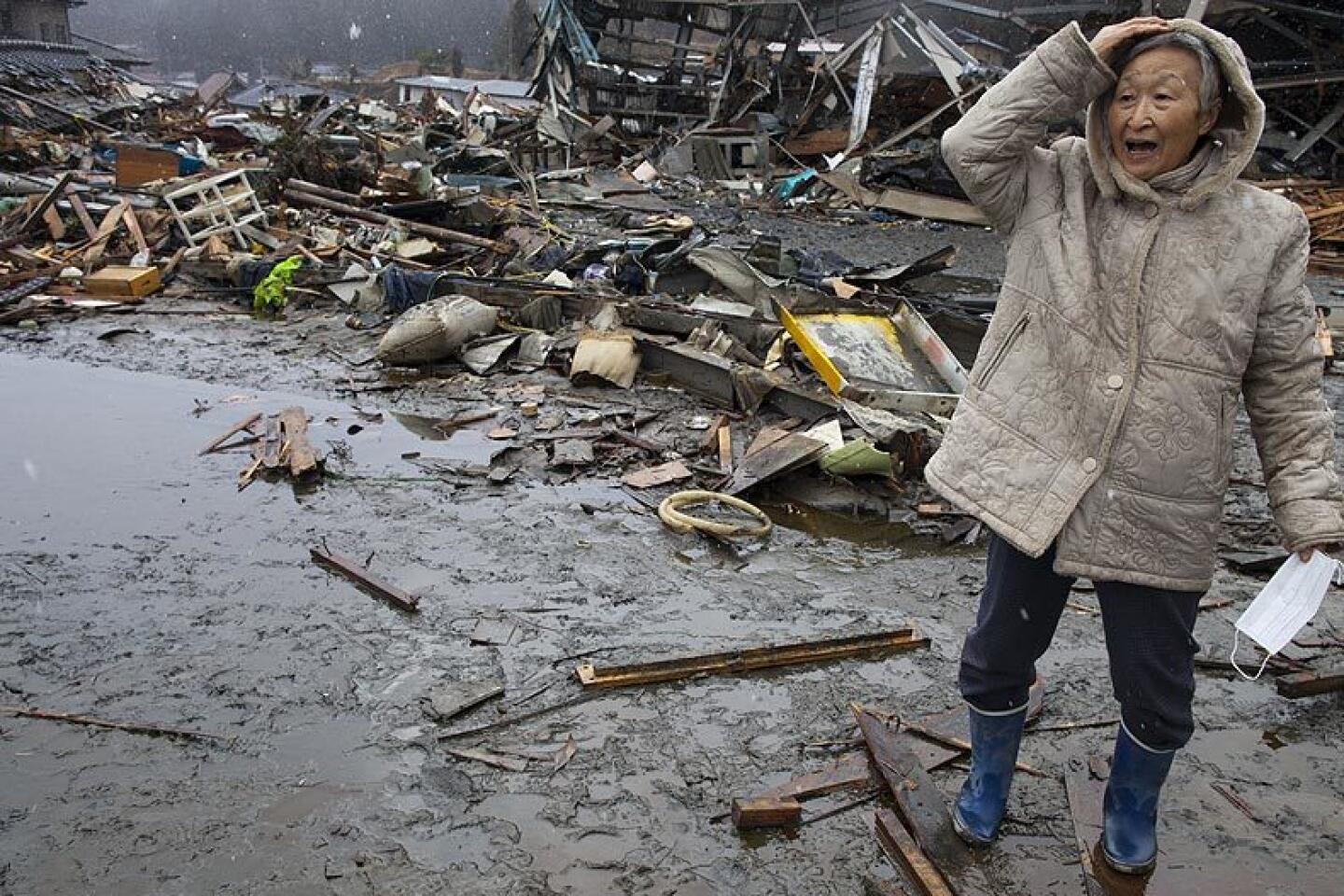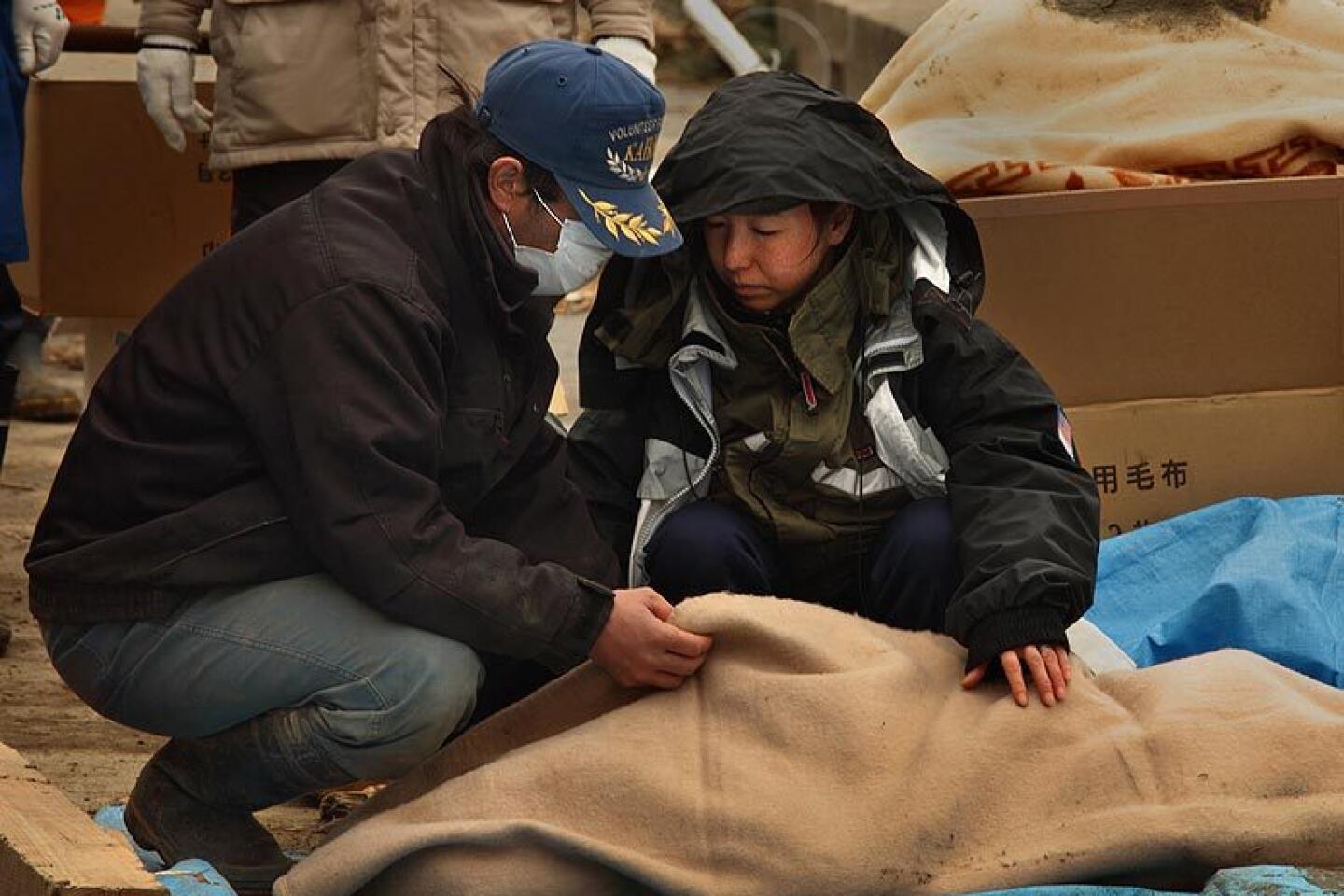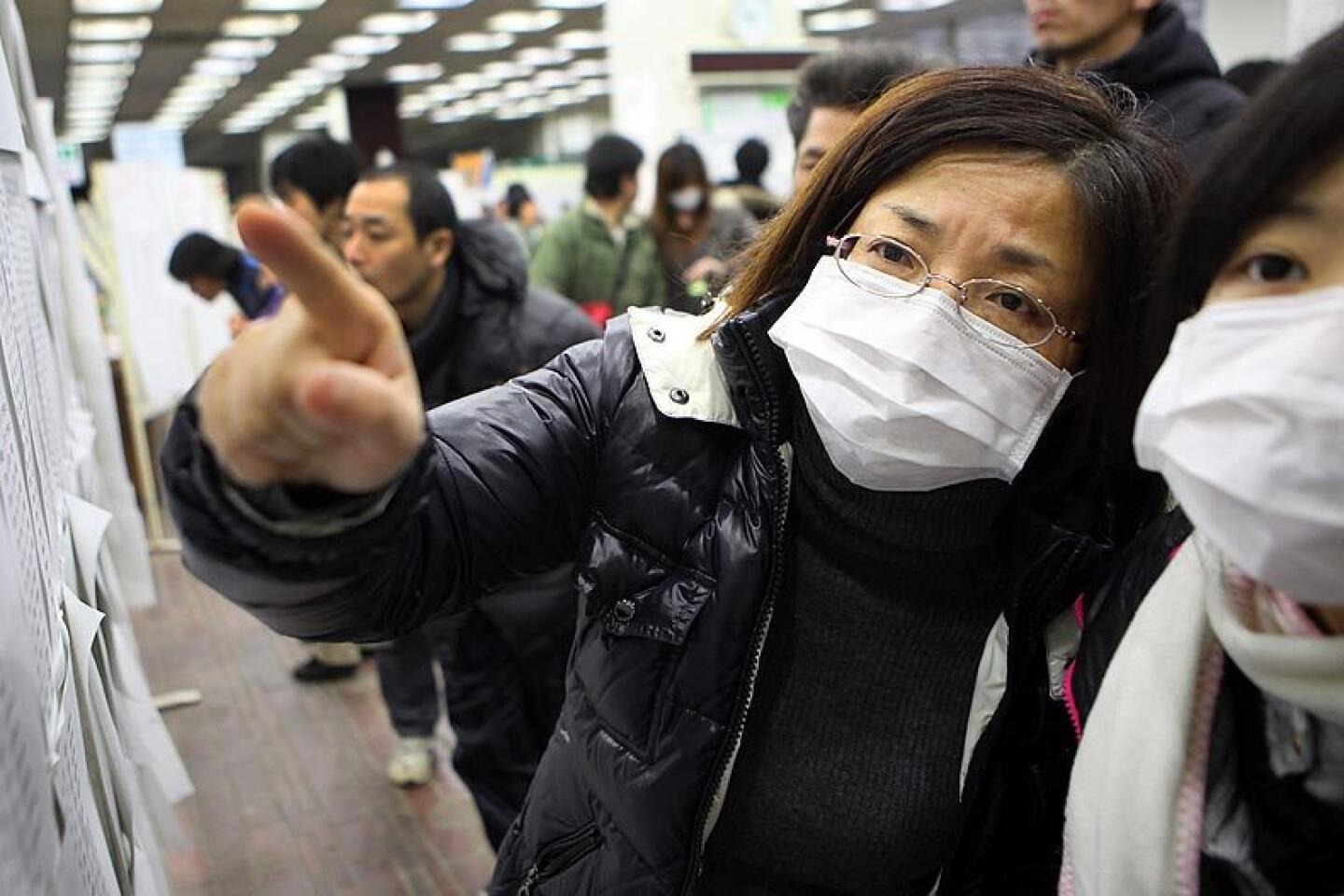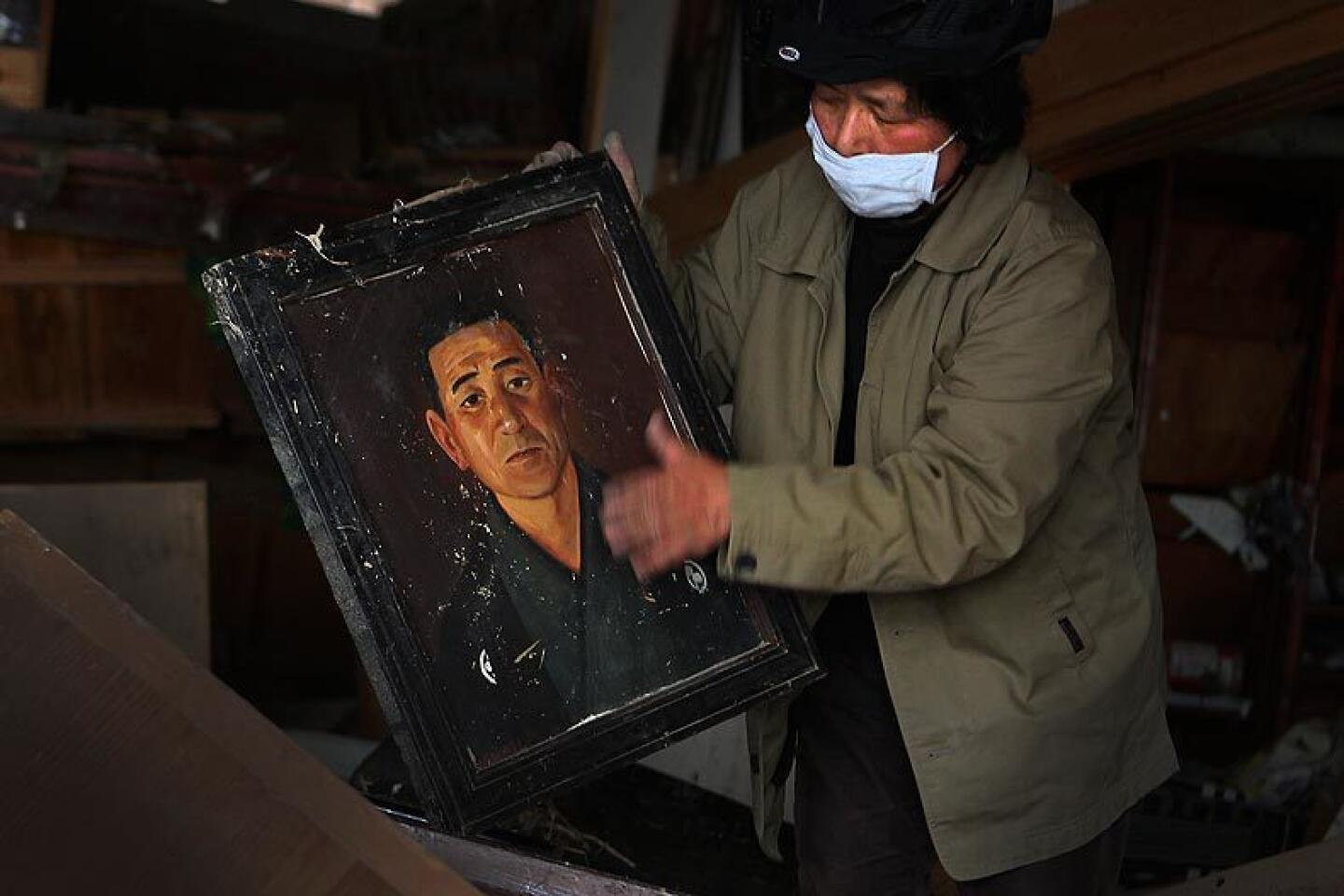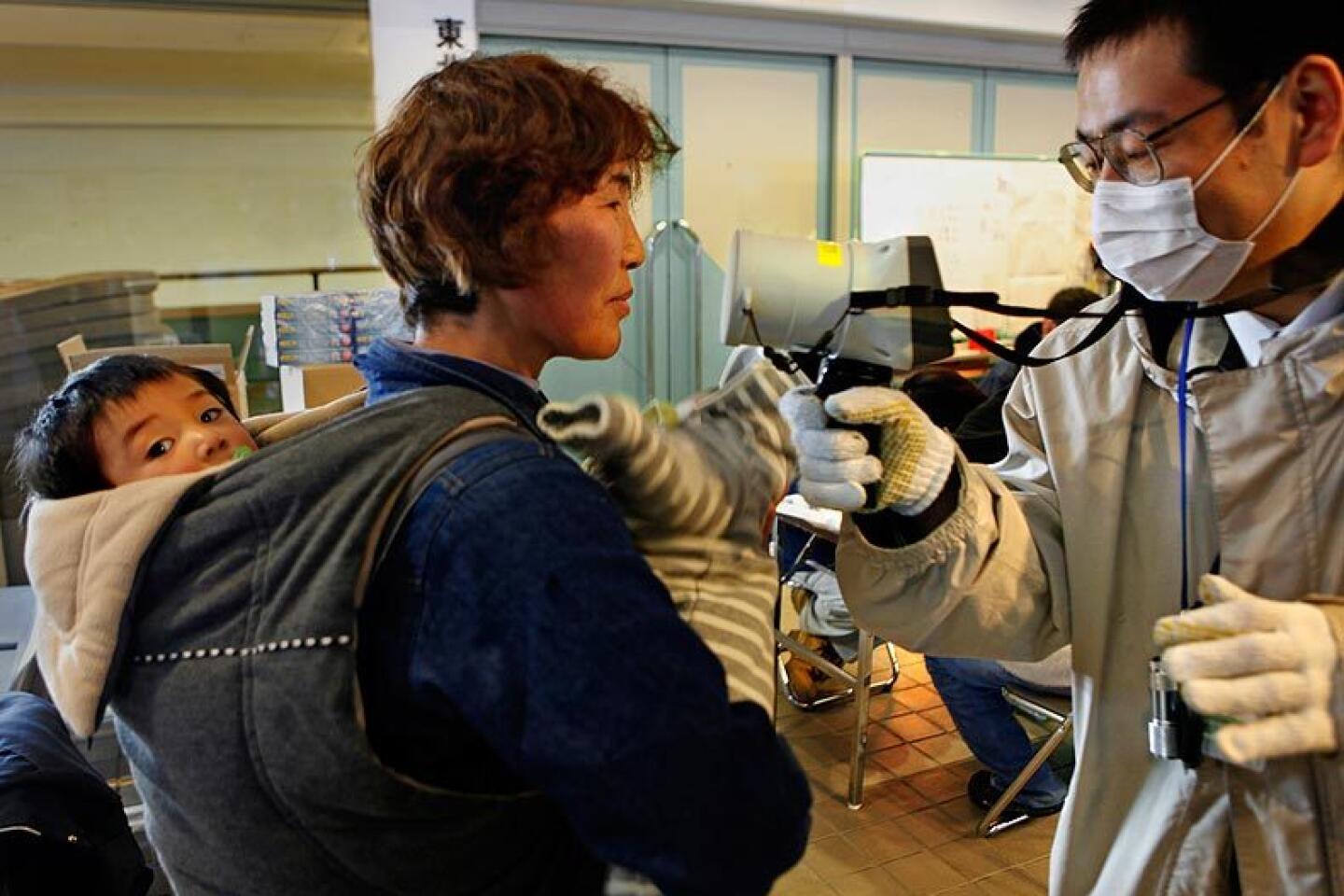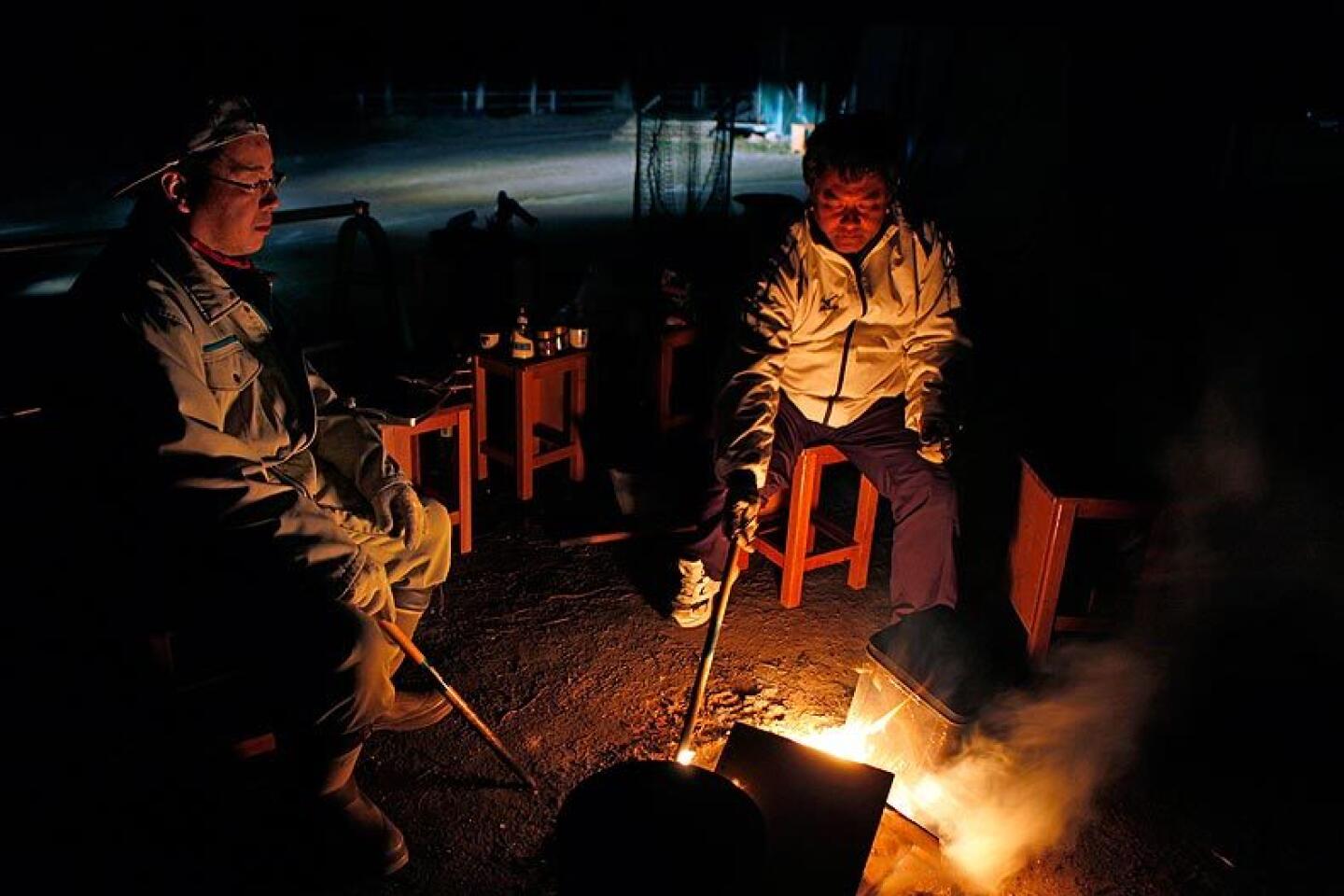In Japan, sifting through the rubble
- Share via
Reporting from Kamihachi, Japan — Megumi Sasaki was looking for the white bicycle helmet.
Working patiently, a flock of seabirds nagging incessantly overhead, the 36-year-old mother of two sifted through the rubble of the only home she had ever known, taken from her by the devastating wave that swallowed this seaside community on March 11.
She had bought the helmet for her daughter Sara’s seventh birthday. But she had hidden it in a family car swept away by the tsunami that rolled across northeast Japan on the heels of a killer magnitude 9 quake.
Both the helmet and the car were missing, like so many other possessions.
Only a few weeks ago, her quaint two-story home was a repository of precious moments, Sasaki’s personal refuge from any storm, the place that housed four generations of her family: her and her grandparents, parents, husband and their two young daughters.
Now it was gone, reduced to a concrete and wood foundation and a few daily items from a past life: a mangled sink lying in the mud, a dismembered toilet seat and several scattered chopsticks.
Megumi Sasaki and her husband, Satoru, had returned to a place that no longer existed as before, an experience shared by seemingly countless families here. Some homes were demolished by the mammoth wave; others contorted into grotesque, cartoonish shapes, never again to be inhabited.
Wearing white cotton gloves with green plastic fingertips, her long brown hair tied up in a flowered bow, the hospital nurse said she had returned home for the first time just days after the disaster.
For Megumi, it was a hellish homecoming.
That day, from a rise in the road, she looked down at her once tightknit community of 20 homes, and she gasped.
“It was mayhem,” she said. “I cried when I saw it.”
But she and her family counted their blessings: All eight household members survived. The children, Sara and 9-year-old Yua, along with Megumi’s parents and her grandparents, both in their 90s, were now safe at a relative’s house, leaving Megumi and Satoru to return to their old neighborhood to search for tiny pieces of their past.
Megumi has returned nearly every day.
“I’m looking for something I can recognize,” she said Thursday, “something I can pick up and say ‘This is mine.’ ”
On a gray afternoon, the couple spread out across a vast landscape of destruction, going about their search with a calm resolve.
Wearing a white towel as a bandana, Satoru, on a hunch, walked down a makeshift lane carved through waist-high piles of twisted detritus, all the time watching closely.
Within minutes, he saw it: the second story of their home, ripped off and dropped nearly a quarter of a mile away. He called to his wife, smiling in amazement.
Megumi said finding the second floor had special meaning.
“My father and grandfather were carpenters,” she said. “Together, they built this addition with their own hands 10 years ago so we had a place to live when we got married.”
They made another find: a color photograph of Yua on a class field trip with a clutch of other youngsters. In the photo Yua is smiling. That made her father smile, too.
“Photos of my children, that’s all I’m looking for,” said the 36-year-old construction worker, his voice trailing off. “Just some memories.”
Neither Megumi nor Satoru was at home when the tsunami rushed in, only the girls and their older relatives, who hurried to a mountainside temple.
But Satoru’s mother, who lived nearby, was taken by the wave. Her body lay in a makeshift mortuary.
As he and his wife searched, Satoru tried to block out the future’s sadness. He concentrated only on the here and now, piecing his life back together one personal item at a time.
He found a blue teacup caked with mud. With a white-gloved index finger, he calmly wiped the dirt like a husband on after-dinner kitchen duty.
Megumi squealed with girlish delight each time she made a find: her daughter’s pink plastic swimming bag, a few plates, a pair of brown pants that she carefully folded and placed inside a school bag.
The other day, the Sasaki girls had returned with their parents. They didn’t cry, their mother recalled, but acted like grownups. “They were just silent,” she said. “It wasn’t like them.”
Saturo said many neighbors have fled to live with relatives in other prefectures. But all of the couple’s clan lives nearby. “We have nowhere to escape to,” Megumi said.
The afternoon drew to a close. The couple walked toward a relative’s car; all five of the family’s vehicles were lost in the flood. Suddenly, Megumi ran into a cousin, 41-year-old Kouno Takayuki. It was their first meeting since the disaster, and they held a long embrace.
Then, in an intimate gesture, Megumi knelt on the roadside and displayed the contents of her bag.
She said the tsunami taught her a hard lesson: A house is more than a place to sleep and cook; it’s a psychological roof that helps to maintain a family’s unique blood bond.
Then the couple drove off to collect the body of Saturo’s mother. They planned to return to their neighborhood the next morning.
Megumi still wanted to find that white bicycle helmet.
More to Read
Sign up for Essential California
The most important California stories and recommendations in your inbox every morning.
You may occasionally receive promotional content from the Los Angeles Times.
